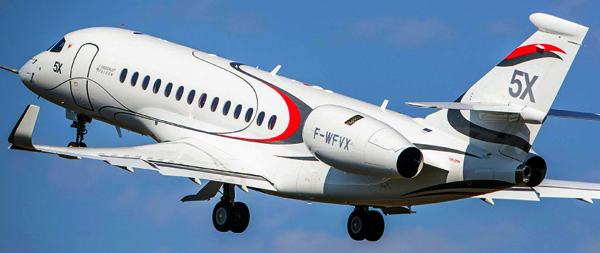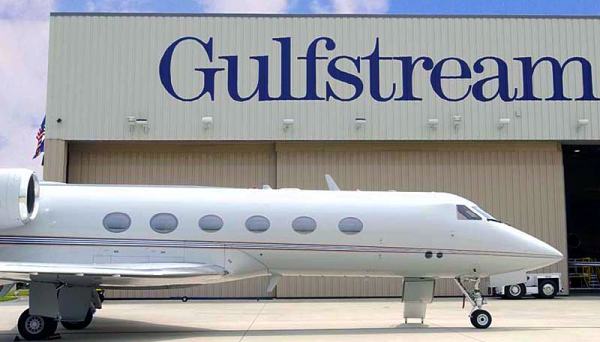Gulf Voice of Aviation
Aircraft Companies
There are major manufacturers of civil transport aircraft (in alphabetical order): There are many marketing and parts manufecturing companies in different parts of the world, following will be considered the only arcraft companies on earth.
Airbus Corporate Jets
Website : https://www.airbus.com/
Airbus today is arguably largest manufacturer of arcrafts. The Airbus followed Boeing into the prepackaged bizliner market in 1997 when it announced the Airbus Corporate Jet (ACJ), a $35 million executive version of its Airbus A319 airliner back in the 97. In 2006, Airbus established a beach-head in Miami to market the ACJ more aggressively in North America and added a second U.S. authorized completion center to finish the aircraft's custom interiors. The A319 ACJ is one of four aircraft (A318, A319, A320, and A321) in Airbus's A320 family. Worldwide, more than 8,600 A320-family aircraft are flying, mostly for airlines. More than 1,500 of them are based in North America with carriers that include Delta, Frontier, Jet Blue, and United. In 2015 Airbus opened an assembly line for A320-family aircraft in Mobile, Alabama. As of October 2018, 206 ACJs were in service, including widebodies and ACJneos—new aircraft equipped with more fuel-efficient engines.

Airbus Corporate Helicopters
+800 55 55 97 97
Marignane, France. Manufactures full line of light, medium, and heavy
helicopters.
Airbus Corporate Jets
+33 5 61 93 33 33
Makes ACJ318, ACJ319, ACJ320 and ACJ321, plus VIP widebodies.
Toulouse, France
Boeing Business Jets
Website : https://www.boeing.com/
The BBJ spawned in 1996 from a partnership between Boeing and General Electric (maker of the CFM-56 series of engines for newer-generation 737s). Now entering its fifth decade of production, the 737 twinjet is the most successful and ubiquitous jetliner ever produced.
The BBJ took components of two 737 models, the 737-700 series airframe and the larger 737-800 series wing, landing gear, and center fuselage section. Anywhere from three to 10 auxiliary fuel tanks can be installed in the belly of the airplane, giving it a maximum unrefueled range of 6,196 nautical miles (with eight passengers) or 14 hours in the air. A larger, stretched version called the BBJ2 boasts 25 percent more cabin capacity, but at the price of slightly reduced range. In 2005, Boeing announced the even larger BBJ3, based on the Next-Generation 737-900ER. The BBJ3 has 1,120 square feet of cabin space. Boeing announced the BBJ Max in 2012. The aircraft is the BBJ variant of the new 737 Max, which features more fuel-efficient engines and improved aerodynamics. The first Boeing Business Jet variants of the Max are designated Max 8 and Max 9. They are based on the current BBJ2 and BBJ3, respectively, and have the same cabin sizes as their predecessors but significantly more range. The BBJ Max 8 has a range of 6,325 nautical miles, a nearly 15 percent improvement over the BBJ2. The BBJ Max 9 will offer a 6,255-nautical-mile range, a 16 percent jump from what the BBJ3 provided. The first BBJ Max 8 was delivered in 2018. Altogether, 210 BBJs were in service through that year, including widebodies.

Boeing Business Jets
(206) 655-1131
Makes BBJs plus VIP widebodies.
Seattle, Washington, United States
Bombardier Aerospace
Bombardier began as a snowmobile manufacturer in 1942 and has grown into one of
the world's largest manufacturers of rail cars, business jets, and regional
airliners. Over the years, the company has expanded its aircraft business
largely through acquisitions, buying brands such as Canadair, DeHavilland,
Learjet, and Shorts.
Bombardier entered the business jet market through its Canadair and Learjet
acquisitions. Canadair had acquired the manufacturing rights to an innovative
business jet designed by Learjet founder William Lear. The Learstar 600 featured
a stand-up cabin, high-efficiency engines, and a new airfoil design. It was
later badged the Challenger 600.
Canadair buckled under the strain of bringing the Challenger to market and
Bombardier acquired the state-owned company in 1986. It used the 600 for the
foundation of its popular regional jets and refined the model over time. It also
added the larger and longer-range models of the Global series. In 1990,
Bombardier bought Learjet, and in 1995 it founded the Flexjet fractional
corporate jet ownership program, which it sold in 2013 to Directional Aviation
Capital, the parent company of fractional ownership company FlightOptions.
After a prolonged gestation period, Bombardier certified its large-cabin,
long-range bizjet, the Global 7500, in late 2018. The $75 million aircraft has a
range of 7,700 nautical miles. Also in 2018, Bombardier announced two
large-cabin models designed to challenge Gulfstream’s new G500 and G600
offerings. The Global 5500 and 6500 models will sport updated avionics,
redesigned interiors, aerodynamically cleaner wings, and more fuel-efficient
engines than their Global 5000 and 6000 progenitors.

Dassault Falcon
Website : https://www.dassaultfalcon.com/
Dassault Industries, EADS, and a small group of private investors own Dassault Aviation, whose U.S. marketing and support subsidiary is Dassault Falcon Jet. The company's plant in southwestern France builds its airframes. Falcon Jets are outfitted with avionics, interiors, and paint at Dassault's Little Rock, Arkansas maintenance and completion facility.
Dassault's Falcon 20 business twinjet first appeared in the U.S. in 1963 and quickly developed a reputation as a rock-solid, comfortable airplane. The French company was already renowned for its Mirage fighter jets, and the Falcon's military heritage translated into an aircraft that in many ways was overbuilt. Using the Falcon 20's fuselage, development of the Falcon 50 trijet began in 1973. The model was the first civilian aircraft fitted with a highly efficient supercritical wing. That, along with new engines, gave the Falcon 50 a true unrefueled transatlantic cruising range. The three-engine design also provided the 50 with better safety margins over water and great short and "high-hot" airfield capabilities.
Production of the 50 series ended in 2008, but the trijet philosophy remains a Falcon Jet staple on the larger Falcon 900 series, first delivered in 1986, and the newer long-range 7X and 8X models. The same fuselage cross-section of those aircraft is used on the shorter, super-midsize, twin-engine Falcon 2000 series, which entered service in 1995.

Embraer-Empresa Brasileira DR AeronÁutica
Website : https://embraer.com/
Brazilian manufacturer Embraer has been building airplanes since 1969 and made its first splash in the American market in the 1970s with its family of commuter turboprops. In 1994, the Brazilian government sold the company to private investors who began developing a regional jet, the ERJ Models 135/145. The RJs carried the company to $3.4 billion in annual sales and $380 million in profits by 2004. More than a thousand 135/145s have been built, and the airframe served as the foundation for the company's first business jet, the Legacy 600, in 1999. The Legacy represented the initial stage in a plan to develop the complete line of business jets that have since come to market.
In 2005, the company announced its intention to develop two entry-level jets, the Phenom 100 and 300. Deliveries of the 100 began in late 2008. The Phenom 300 was the bestselling business jet from 2012 to 2016. Embraer subsequently built an engineering, development, assembly, and delivery center for the aircraft in Melbourne, Florida. In 2006 the company announced the Lineage 1000, a large business jet based on its Model 190 airliner. Deliveries began in 2009. In 2008, Embraer announced that it was proceeding with development of two midsize jets, the Legacy 450 and 500. The company introduced updated and enhanced versions of those models, called the Praetor 500 and 600, in 2018. Embraer’s Melbourne center is also home to Embraer X, stood up in 2017 to explore “disruptive technologies,” including urban air vehicles.
Gulfstream Aerospace
Website : https://gulfstream.com/en/
Gulfstream has been building business aircraft since 1958. In 1966, it introduced the GII, the first large-cabin pure business jet. The GII was designed by Grumman, the company that developed carrier-based naval jet aircraft, most famously the F-14 "Tomcat" as well as the original GI turboprop.
Grumman sold its Gulfstream division in 1978. After subsequently passing through three civilian owners, the company is today owned by another defense contractor, General Dynamics. Over the years, iterations of the aircraft have been developed with different engines, avionics, wings, and fuselage length, but through the G550, they all used the same GII fuselage cross-section.
In 2001, Gulfstream bought Galaxy Aerospace, thus adding two smaller aircraft, which it renamed the G100 and G200, to its product line. Israel Aircraft Industries manufactures those aircraft, but they are completed at Gulfstream facilities in the U.S. The company introduced an improved version of the G100, the G150, in 2005, and the most current version of the G200 is the G280
Gulfstream manufactures its five current large-cabin jets—the G550, G500/600, and G650/650ER—in Savannah, Georgia. These aircraft are mainly differentiated by cabin volume, range, and price. The G550 has an unrefueled range of 6,750 nautical miles. In 2008, Gulfstream announced that it was developing the G650, with its larger and wider cabin, compared with the G550, and with a 7,000-nautical-mile range. A subsequently certified revised version, the G650ER, offers a range of 7,500 nautical miles. Both G650 variants have a maximum operating speed of Mach 0.925, making the model one of the world's fastest civil aircraft.
In 2014, Gulfstream launched the large-cabin G500 and G600, designed as successors to the now-discontinued G450 and the current G550, respectively. Both new aircraft feature fly-by-wire flight controls and Pratt & Whitney Canada PW800 series engines. G500 deliveries began in 2018 and G600 deliveries are scheduled to start in 2019. Production of the G550 is expected to wind down as the two new models enter service.

Pilatus Business Aircraft
Website : https://www.pilatus-aircraft.com/en
Based in Stans, Switzerland, Pilatus has been making airplanes since 1939 and is
the world's largest manufacturer of single-engine turboprops. Most of these are
military trainers like the U.S. Air Force's "Texan II."
The first PC-12 flew in 1991. The single-engine turboprop can alight from rough
and short airstrips—as short as 2,300 feet—climb to 30,000 feet, cruise at 269
knots, and fly nearly 1,400 nautical miles with 45 minutes of IFR reserve flying
time. Maximum takeoff weight varies from 9,920 to 10,495 pounds, depending on
serial number. The PC-12's maximum useful load (passengers, cargo, and fuel) is
4,233 pounds. Its electrically actuated 53-inch-wide rear cargo door can swallow
motorcycles, snowmobiles, pianos, and even outsized wildlife. Various executive
or utility configurations generally offer seating for two pilots and six to 14
passengers. The airplane is routinely flown single-pilot. After a
two-and-a-half-year flight-test program, the PC-12 received Swiss certification
in 1994. In 1996, Pilatus established its Broomfield, Colorado operations to
better serve the Americas and, by 1997, the 100th PC-12 had rolled down the
production line. Today, more than 1,600 PC-12s are in service.
In 2013 Pilatus unveiled plans for an 18,000-pound twinjet, the PC-24.
Deliveries began in late 2017. The initial batch of aircraft sold out a mere 36
hours after Pilatus began taking orders in 2014. Like the PC-12, the model
features a big rear door—4.1 feet wide and 4.25 feet tall—able to accommodate
standard cargo pallets. Priced like a light jet at $8.9 million (2017 dollars)
and with corresponding operating economics, but with the cabin space of a
midsize, the PC-24 is able to use short grass and dirt runways like a turboprop
and can also be flown by a single pilot. Pilatus’s “very versatile jet” can take
off from runways as short as 2,690 feet fully loaded.
Textron Aviation
Website : https://txtav.com/
Textron Aviation manufactures Cessna, Beechcraft, and Hawker branded airplanes. Cessna spent $35 million in the late 1960s—then half the worth of the company—developing a twinjet it named the Citation, after the legendary racehorse. During the 1970s and 1980s, the Citation destroyed much of the market for business twin turboprops. Fairchild, Mitsubishi, Piper, Rockwell, and even Cessna itself stopped building them. Today, the only "vintage" twin turboprop still in production is the venerable Beech King Air.
Cessna's business jet models are precisely positioned along well-defined performance and price points. This strategy has enabled the company to sell more bizjets than any of its competitors. Probably not since Alfred P. Sloan commanded General Motors from 1923 to 1946 has a company so skillfully executed branding, market positioning, and the concept of stepping up customers through price-progressive products. Textron manufactures a full line of business jets, from the M2 through the super-midsize Longitude and is well on its way to relaunching development of a large-cabin offering, the Hemisphere. That project had been suspended due to concern over the Safran Silvercrest engines that have been selected but is now “on track,” according to Textron Aviation.
In 1937, Walter Beech introduced the Model 18, arguably the first cabin-class twin-engine business airplane. In 1958, Beech launched the Queen Air, a twin piston-engine aircraft that remarkably resembles today's twin turboprop King Air. Beech delivered the first King Air in 1964. It was an immediate hit; quickly Beech commanded an amazing 77 percent market share of the corporate twin turboprop market. Several models of updated King Airs remain in production.
Walter Beech died in 1950 and his widow, Olive Ann, oversaw the company until its sale to Raytheon in 1980. Raytheon sold the business to an entity formed by several investment firms in 2007. The company was renamed Hawker Beechcraft to reflect its two aircraft brands, having acquired the rights to produce the British Hawker line of light business jets. The newly constituted Hawker Beechcraft declared bankruptcy in 2012 and its parts and pieces were subsequently acquired by Textron, which opted to keep Beechcraft-brand piston and turboprop aircraft in production but kill off the jet offerings from Beechcraft (the Beechjet/Hawker400/450, itself a derivative of the Japanese-designed Mitsubishi Diamond; and the Premier line) and Hawker. However, Textron still supports those models with parts and service.
Pressgage
Pressgage - Measurement and Control Instruments is a company that accepts challenges and innovates and evolves technologically adding facilities with quality and respect in providing services to its customers. Measurement & Control Instruments In case you're interested in knowing more info contact our team sales
There are many aircrafts that have met acidents and many have been saved associated with miricles, such miricles which people only talk about but have no explaination. Miracles are associated with fear only because of the belief that darkness can hide. You believe that what your physical eyes cannot see does not exist. This leads to a denial of spiritual sight. Find out more at https://www.acim.biz
What inspires people to achieve:- The wise men have set many examples in the history, in the modern world a lot of people have preserved quotes of wise people who said some of the secrets of their lives some in light mode some in serious. You can get inspired or get more knowledge of the depth of the state of affairs by reading these quotes. If you are looking for positive quotes then read more . Check out and be inpired and knowledgeable of the the philosophy of life thru the quotes of these wise men
Speninging time during the slow business period is difficult, for aviation industry people who are always busy in meetings, travelling from one city to an other like celebraties and getting the best of the treatment at hotels restaurants. One way to spend your breaktime is to unwind and look for movies to watch, Check out The professional company Movies By in Dubai provides all the information on movie-1st. The movies can kill time as well as can give you ideas to do some thing new or do your business diffrently.

10 Things In Aviation During 2050
Innovative solutions for the climate: halving CO² emissions & reducing aircraft noise
The future of the aviation industry lies in electric flying
Fuel cells and regenerative energies could make flying emission-free
Aviation industry: Future with aviation fuel from biomass & solar power
Freight and passenger numbers will continue to rise despite "flight shame"
The future of aviation - futuristic cabin interiors
Taxis of the skies - already a reality in 2050?
ARTS - We design the future of aviation
center>